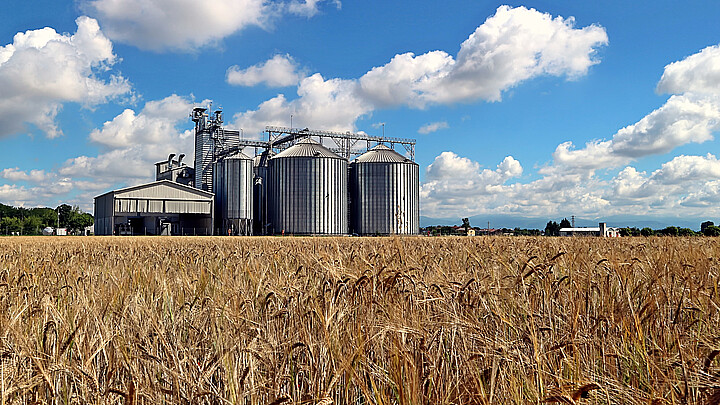Business
Brazil's trade balance broke historic record -- so why aren't we talking about it?
The Brazilian economy has been showing a resilience that has gone unnoticed in Latin American and American news outlets
January 21, 2022 3:54pm
Updated: January 21, 2022 3:55pm
The Brazilian economy has been showing a resilience that has gone unnoticed in Latin American and American news outlets.
Last year -- despite complications such as the coronavirus pandemic and a severe drought that ravaged the country -- Brazil recorded the largest surplus in the history of its trade balance, totaling $61.2 billion, an increase of $10.8 billion compared to 2020.
The trade flow (the total sum of exports and imports) reached a value of $500 billion, with an increase of 34.2% in exports and 38.2% in imports in relation to 2020.
Brazilian exports accounted for 67% of goods (agricultural or mineral) of total exports, demonstrating the agro-industrial power Brazil has become. With only 2.5% of the world's population, Brazil feeds one billion people -- or 12.5% of the entire planet.
The agricultural sector alone made up 20% of Brazilian exports, with soybeans accounting for 70% of the sector's sales, followed by coffee. Both products had a price increase during the pandemic.
When considering Brazil’s trading partners, China comes out on top in terms of Brazilian exports and imports. Its share fluctuated from 32.4% in 2020 to 31.3% in 2021 and reached a total of $ 87 billion.
Furthermore, the Brazilian surplus with the Asian power increased from 33 to 40 billion dollars.
The US ranks second in terms of Brazilian exports, but remains well below China with only 11% of total Brazilian exports (31 billion out of a total of 280 billion). However, one should remember that Brazil's trade surplus with China is larger than Brazil's total exports to the U.S.
Argentina, on the other hand, still remains the South American giant's third largest partner and accounted for a total of $11 billion in terms of Brazilian exports.
In addition to the favorable trade balance, Brazilian GDP also grew more than expected at the beginning of the year. In the toughest year of the pandemic (2020), the IMF said Brazil’s GDP would fall by 9.1% -- yet at the close of 2020, Brazil’s GDP had only fallen by 3.9%.
Time and time again, Brazil came out ahead in terms of negative estimates. At the beginning of 2021, for example, the IMF projected a total growth of 3.7%, but Brazil grew by 4.5% in 2021.
In terms of public debt, the Central Bank of Brazil, in a Dec. 30 press release, reported that it had consolidated a surplus of 64 billion reais in public accounts, compared to a deficit of 651 billion in 2020, marked by the very high costs of the pandemic and the emergency measures.
This is, without a doubt, a remarkable improvement that should not be overlooked in a year that has battered public accounts worldwide.
Yet although inflation in Brazil reached 10%, such a high number must be contextualized.
Respected journalist J.R. Guzzo stressed that this number is not a sign of failure, noting that the U.S., the world’s largest power, reached 7% inflation – its worst since 1982. Had Brazil been led by another government, inflation could thus be even higher. Guzzo recalled that inflation reached 14% at the end of Lula-Dilma’s government in 2016, at a time when Brazil wasn’t in the throws of a global pandemic.
Personally, I would add that Argentina – whose government follows an economic policy similar to that of Lula da Silva – currently is suffering an inflation rate of 50% per year.
One should therefore be weary of drawing conclusions about Brazil based on what is published by mainstream media outlets. It is common to see reporters – either out of affinity with Lula da Silva or out of irrational hatred for President Jair Bolsonaro – only speak poorly about Brazil.
In terms of a forecast for 2022, I will base my analysis on the work of economist Ubiratan Oirio, who has published work that looks to the past in order to imagine which scenarios could happen in Brazil this year.
According to Oirio, there were 4 major external and internal shocks in 2021: the pandemic, the interruption of global trade chains, the water crisis that impacted energy production, and the water crisis that affected agricultural production.
The economist also notes that Brazil’s Itaipu hydroelectric plant (the largest in the world until the construction of the Three Gorges in China) recorded its worst production in 26 years and the Paraná River basin had its worst drought in 70 years last year. In other words, even with all these shocks, the Brazilian economy proved to be strong and resilient.
Thus, as the world begins to return to normality, growth should be more robust this year.
Add to that the crucial information provided by Oirio on private investments. According to his research, the government conducted a total of 131 auctions between 2019 and 2021 totaling 822 billion reais in guaranteed private investments. This is a remarkable increase in investments, the only thing that guarantees sustainable growth for a country.
Ultimately, Brazil could once again surprise the most skeptical economists, who have repeatedly bet the wrong way with regards to Brazil.
One must remember, however, that these positive expectations could be threatened should the São Paulo Forum's presidential candidate, Mr. Lula da Silva make it into office.










